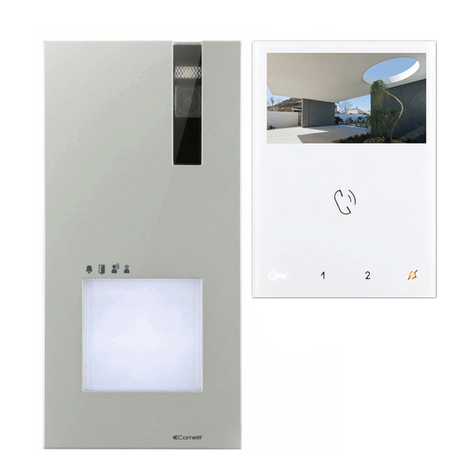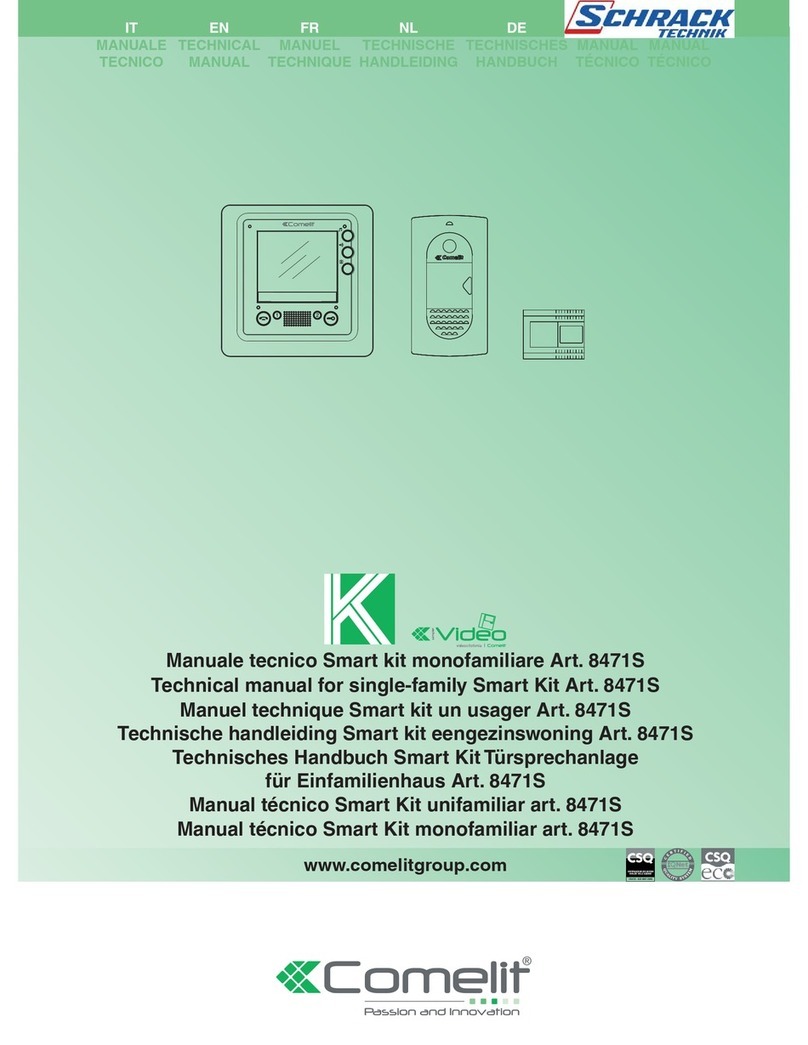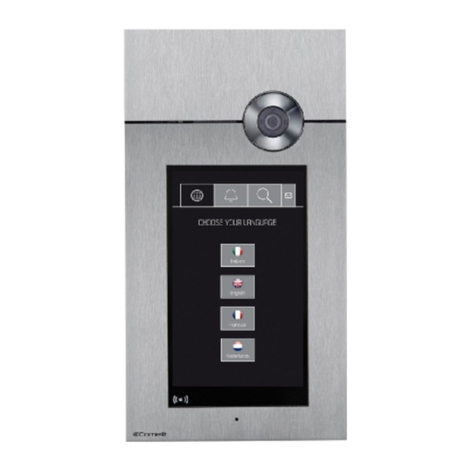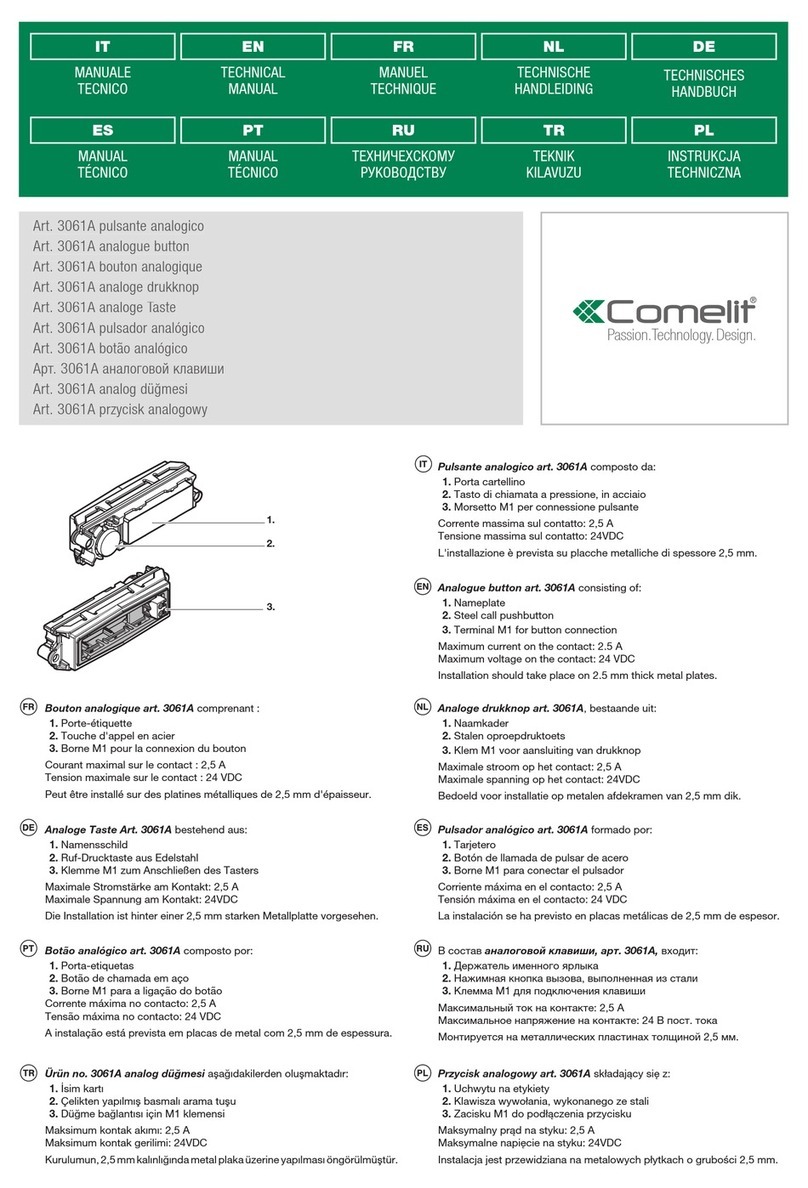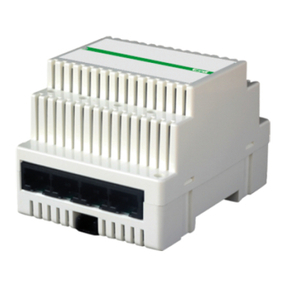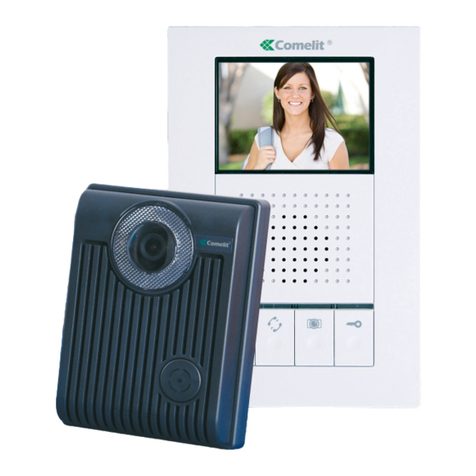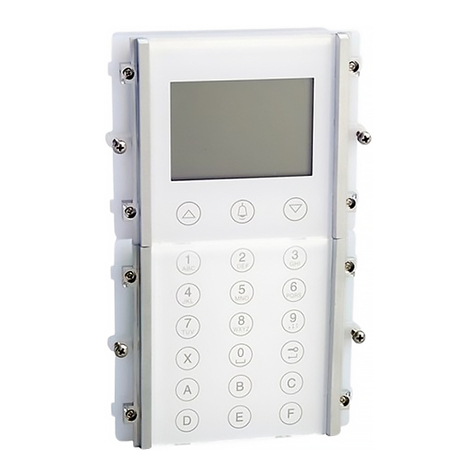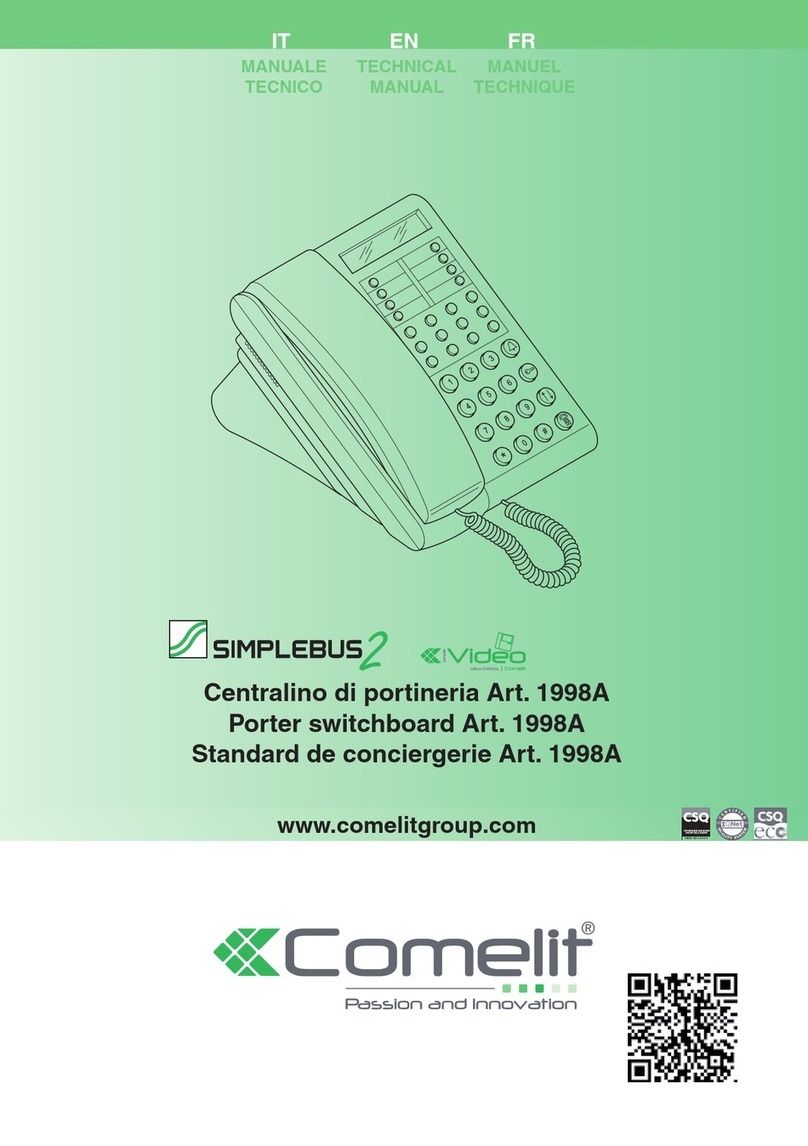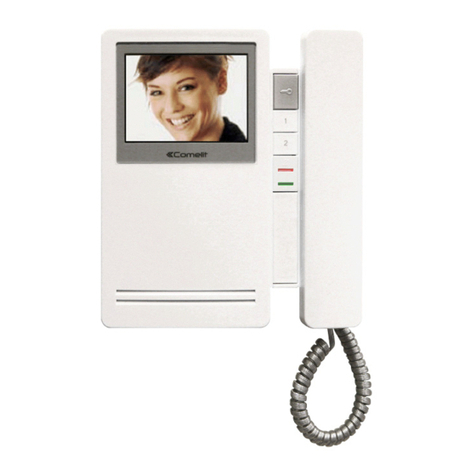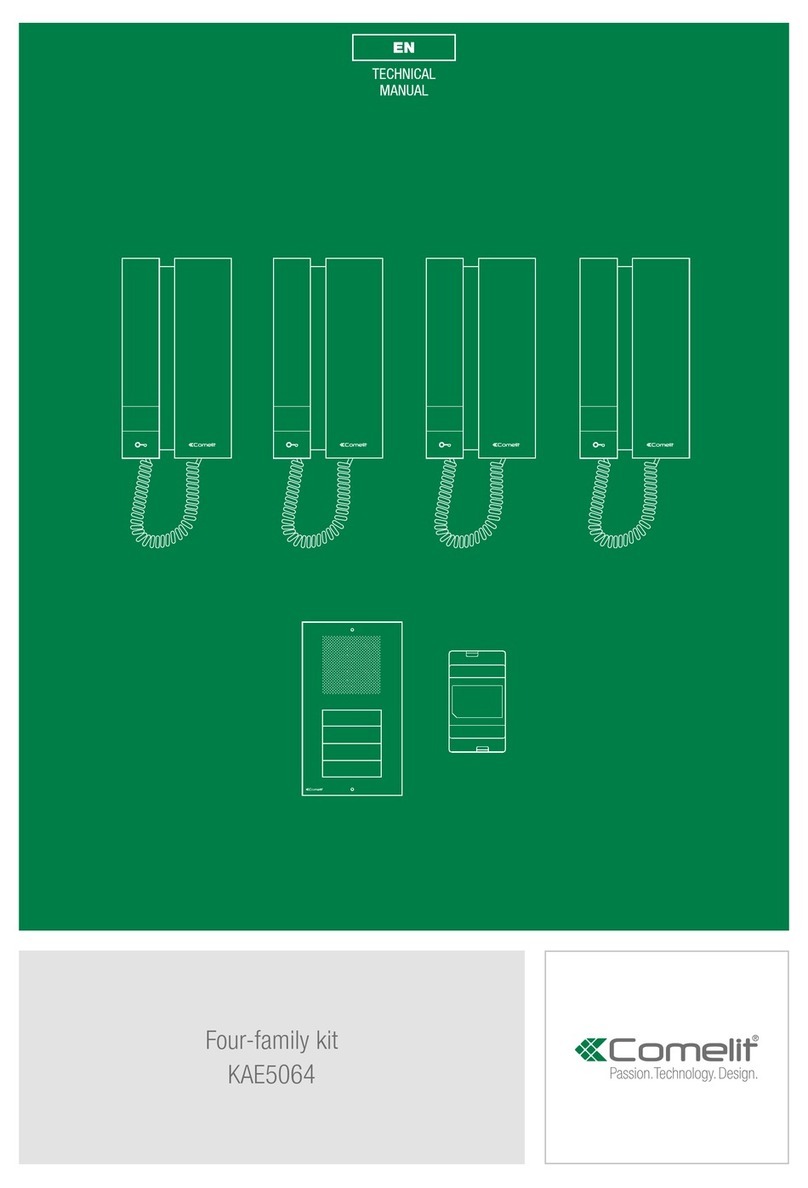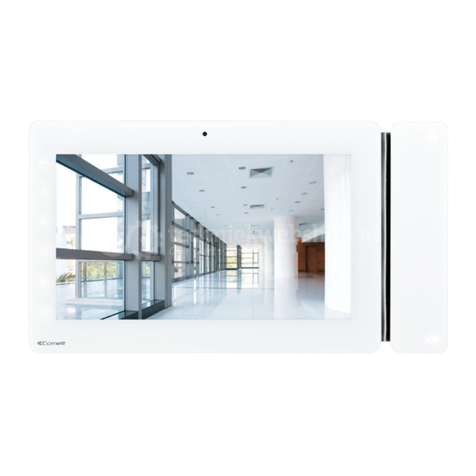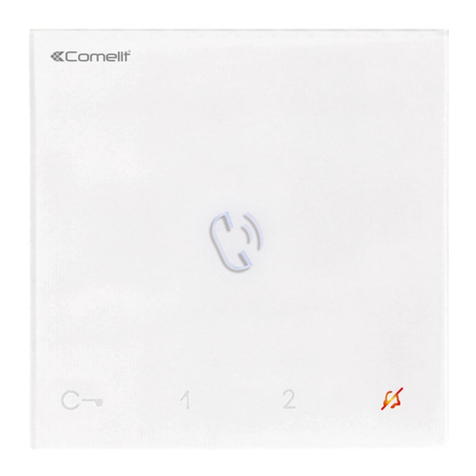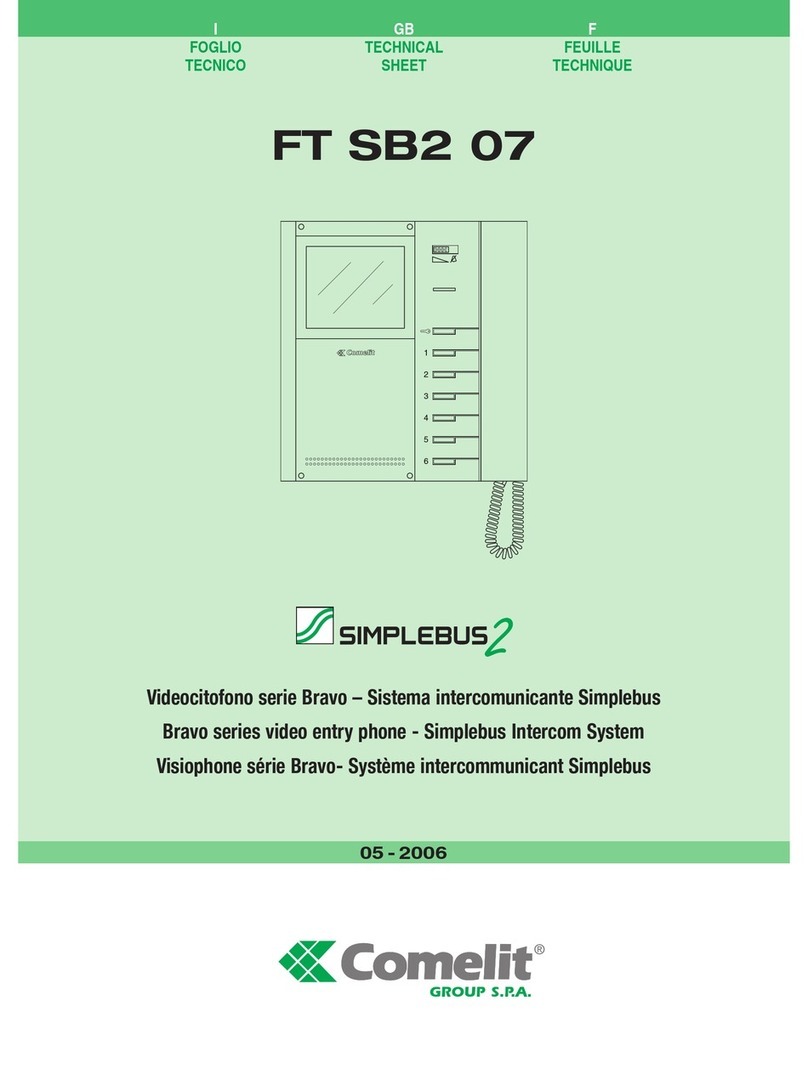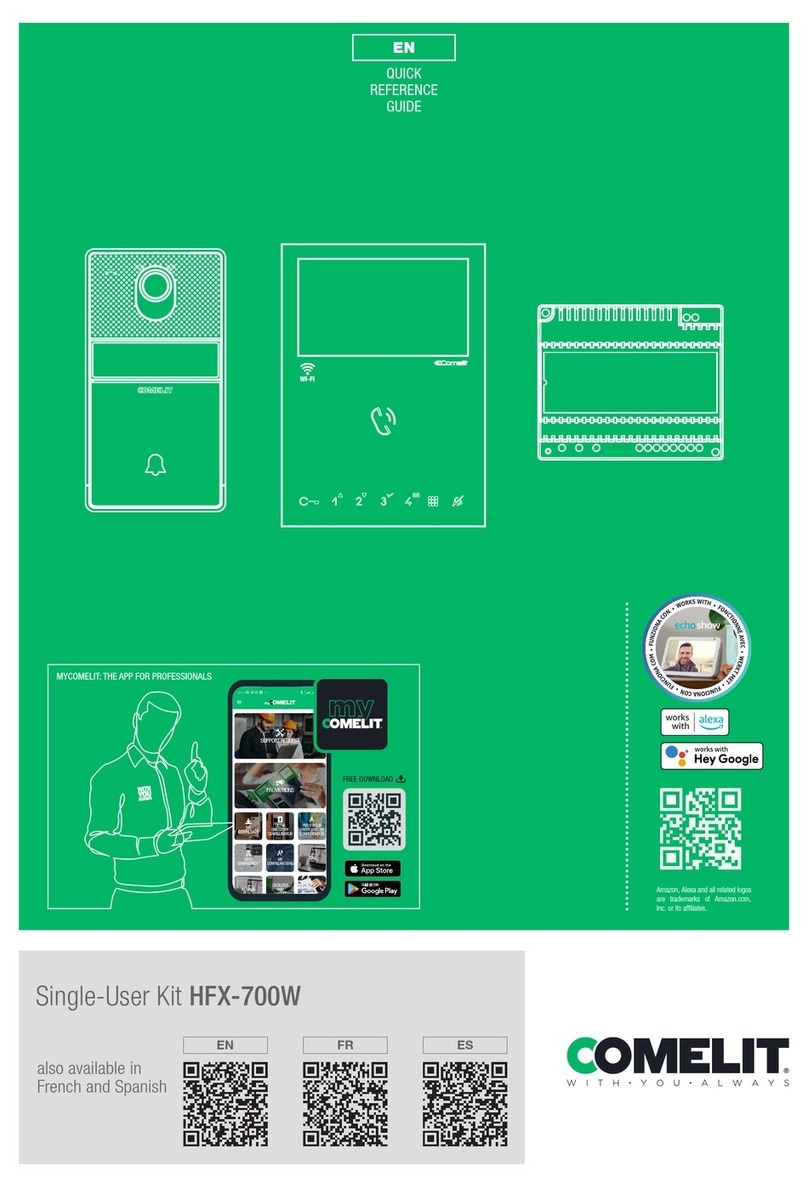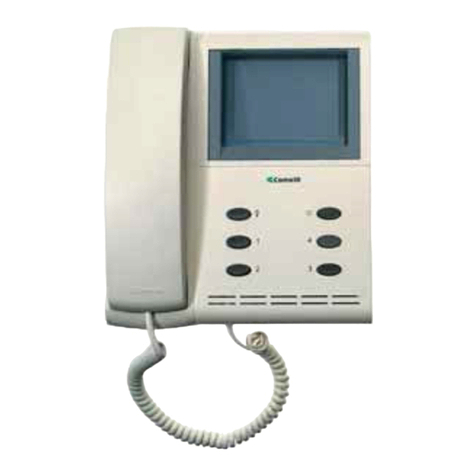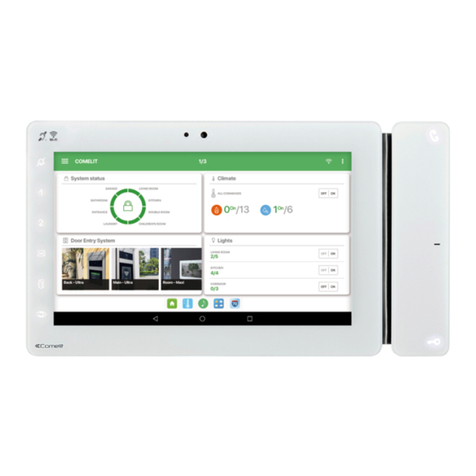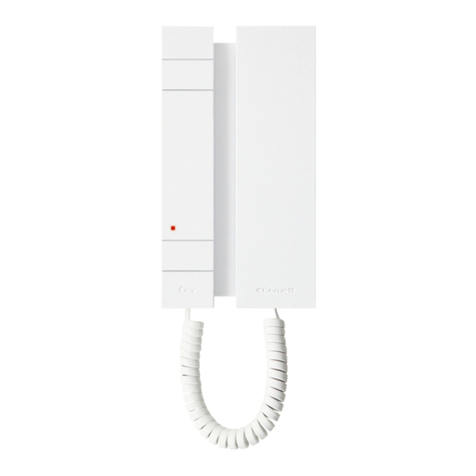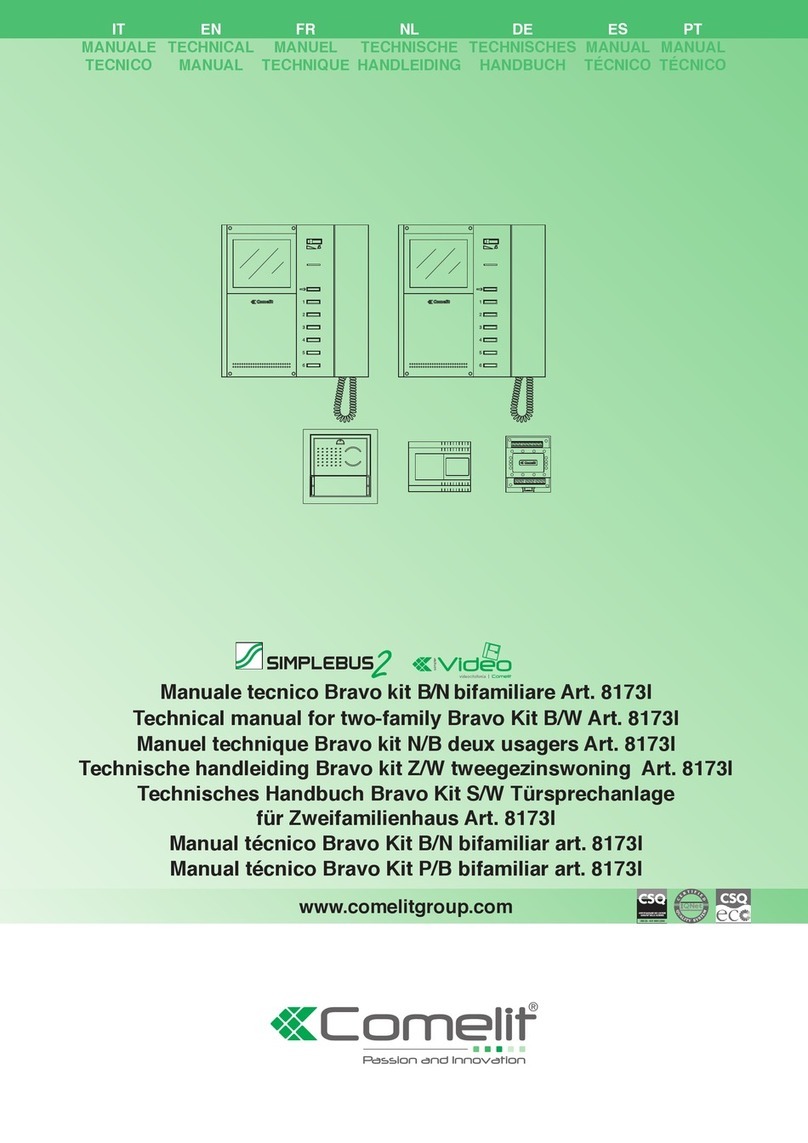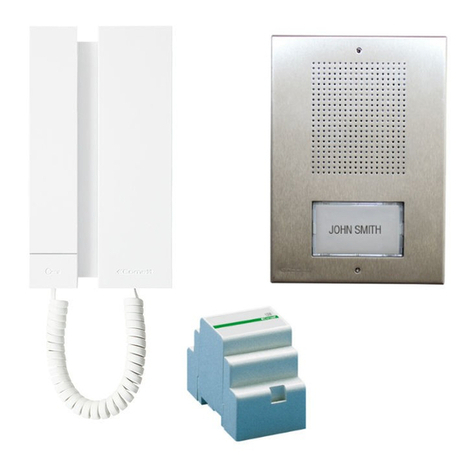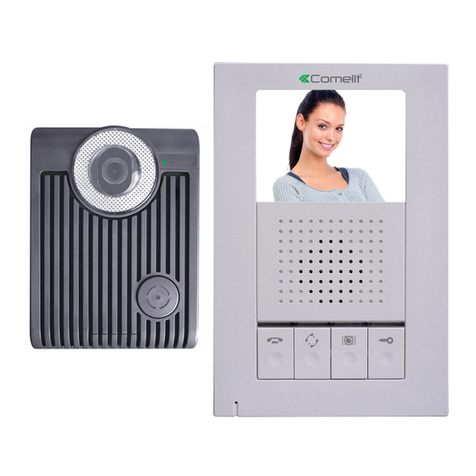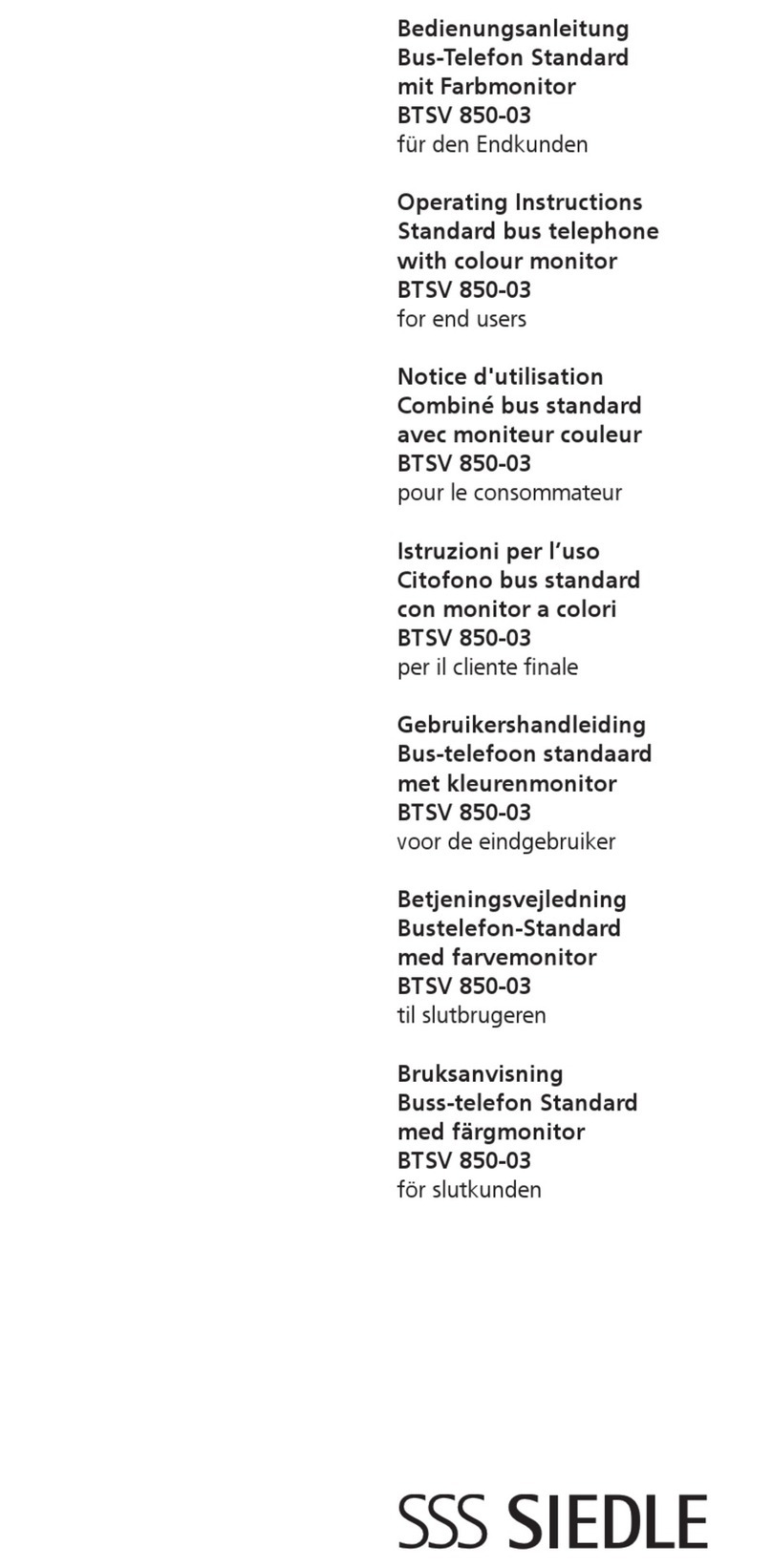
10
EN
NL
PT
FR
ES
DE
Example:
on a monitor with user code 5, P1 programming = generic actuator, P2
= coded actuator (code 125)
1. Set S2 DIP switch 5-6 to the combination 01
2. Refer to the table on page 9 and select a combination in
which the actuator function (ACT) is listed for the keys you wish
to program.
E.g.: for P1= generic actuator, set S2 DIP switches 1-2-3-4 to the
combination 0000 or 1100 or 0010 (P1=ACT), set S1 DIP switches
to the combination 11111111, go to point 3
E.g.: for P2= coded actuator (code 125), set S2 DIP switches 1-2-
3-4 to the combination 0010 or 1010 (P2=ACT), set S1 with ad-
dress 125 in accordance with table A on page 16, go to point 3
3. Press and release the key to be associated with the function
4. To exit programming mode, set S2 DIP switches 5-6 to the
combination 00
5. When programming is complete, set S2 DIP switches 1-2-3-4
to the combination 1111. Restore the user code setting on S1,
see table A on page 16.
» the lock-release LED lights up
» a confirmation tone will sound.
» the privacy LED switches off
»the privacy LED flashes
Exemple :
sur moniteur avec code usager 5 programmation P1= actionneur
générique, P2= actionneur particulier avec code 125
1. Placer DIP 5-6 de S2 en combinaison 01
2. Consulter le tableau page 9 et choisir une combinaison qui
affiche la fonction actionneur (ACT) pour les touches qui doivent
être programmés.
ex : pour P1= actionneur générique, programmer DIP 1-2-3-4 de
S2 en combinaison 0000 ou 1100 ou 0010 (P1=ACT), programmer
DIP de S1 en combinaison 11111111, passer au point 3
ex : pour P2= actionneur particulier avec code 125, programmer
DIP 1-2-3-4 de S2 en combinaison 0010 ou 1010 (P2=ACT), pro-
grammer S1 avec adresse 125 conformément au tableau A page
16, passer au point 3
3. Appuyer sur la touche puis le relâcher pour associer la fonction
4. Pour quitter la programmation, mettre les DIP 5-6 de S2 en
combinaison 00
5. Au terme de la programmation, mettre les DIP 1-2-3-4 de S2
en combinaison 1111. Rétablir sur S1 la configuration du code
usager, voir tableau A page 16.
» la led ouvre-porte s’allume
» une tonalité de confirmation retentit.
» la led privacy s’éteint
» la led privacy clignote
Voorbeeld:
op monitor met gebruikerscode 5 is programmering P1 = algemene
relaissturing, P2 = geadresseerde relaissturing met code 125
1. Plaats dipswitches 5-6 van S2 in de combinatie 01
2. Raadpleeg de tabel op pag. 9 en kies een combinatie waarin
de relaisfunctie (ACT) verschijnt voor de drukknoppen die u wenst
te programmeren.
Voorbeeld: voor P1 = algemene relaissturing stelt u de dip-
switches 1-2-3-4 van S2 in op de combinatie 0000 of 1100 of 0010
(P1=ACT), en stelt u de dipswitch van S1 in op de combinatie
11111111, ga door naar punt 3
Voorbeeld: voor P2 = relaissturing geadresseerd op code 125 stelt
u de dipswitches 1-2-3-4 van S2 in op de combinatie 0010 of 1010
(P2=ACT), en stelt u S1 in met adres 125 volgens tabel A op pag.
16, ga door naar punt 3
3. Duw op de drukknop waaraan u de functie wil toewijzen en laat
weer los
4. Om de programmering te verlaten stelt u dipswitches 5-6 van S2 in
op de combinatie 00
5. Aan het eind van de programmering stelt u de dipswitches
1-2 3-4 van S2 in op de combinatie 1111. Stel de instelling van
de gebruikerscode opnieuw in op S1, zie tabel A op pag. 16.
» de led voor deur openen gaat aan
» Er klinkt een bevestigingstoon.
» de privacy-led gaat uit
» de privacy-led gaat knipperen
Beispiel:
Am Monitor mit Benutzercode 5 Programmierung P1= allgemeine
Relaissteuerung, P2= codierte Relaissteuerung mit Code 125
1. DIP-Schalter 5-6 von S2 auf die Kombination 01 stellen
2. In der Tabelle auf Seite 9 eine Kombination wählen, in der für
die Tasten, die programmiert werden sollen, die Funktion Relais
(ACT) erscheint.
BEISPIEL: Für P1= allgemeine Relaissteuerung die DIP-Schalter
1-2-3-4 von S2 auf die Kombination 0000 oder 1100 oder 0010
(P1=ACT) stellen, DIP-Schalter von S1 auf die Kombination
11111111 stellen, weiter mit Punkt 3
BEISPIEL: Für P2= Codierte Relaissteuerung mit Code 125
die DIP-Schalter 1-2-3-4 von S2 auf die Kombination 0010 oder
1010 (P2=ACT) stellen, S1 gemäß Tabelle A auf Seite 16 mit
Adresse 125 einstellen, weiter mit Punkt 3
3. Die Taste, der die Funktion zugewiesen werden soll, drücken und
gedrückt halten
4. Zum Beenden der Programmierung die DIP-Schalter 5-6 von S2 auf
die Kombination 00 stellen
5.
Am Ende der Programmierung die DIP-Schalter 1-2-3-4 von S2 auf
die Kombination 1111 stellen. Die Einstellung des Benutzercodes
auf S1 wieder herstellen, siehe Tabelle A auf Seite 16.
» Die LED Türöffner leuchtet auf
» Es ertönt ein Bestätigungston.
» Die LED Privacy erlischt
» Die LED Privacy blinkt
Ejemplo:
En el monitor con código de usuario 5 se desea programar P1=
actuador genérico y P2= actuador asignado a código 125
1. Programar los DIP switches 5-6 de S2 en 01
2. Consultar la tabla de pág. 9 y elegir una combinación en la que
aparezca la función actuador (ACT) para las teclas que se desea
programar.
ES: para P1= actuador genérico, programar los DIP switches 1-2-
3-4 de S2 en 0000, 1100 o 0010 (P1=ACT) y los DIP switches de
S1 en 11111111. Pasar al punto 3.
ES: para P2= actuador asignado a código 125, programar los DIP
switches 1-2-3-4 de S2 en 0010 o 1010 (P2=ACT) y S1 con la
dirección 125 según se ilustra en la tabla A de pág. 16,. Pasar
al punto 3.
3. Presionar y soltar la tecla al que se desea asociar la función
4. Para salir de la programación, programar los DIP switches 5-6 de
S2 en 00
5. Terminada la programación, poner los DIP switches 1-2-3-4
de S2 en 1111. Restablecer la configuración del código de
usuario en S1, véase tabla A de pág. 16.
» el led abrepuertas se enciende
» Se emite un tono de confirmación
» el led privacidad se apaga
» el led privacidad parpadea
Exemplo:
num monitor com código de utilizador 5 programação P1 = actuador
geral, P2 = actuador com endereço com o código 125
1. Colocar os DIPs 5-6 de S2 na combinação 01
2. Consultar a tabela da pág. 9 e escolher uma combinação onde
surja a função de actuador (ACT) para os botões que se pretende
programar.
EX.: para P1 = actuador geral configurar os DIPs 1-2-3-4 de S2 na
combinação 0000 ou 1100 ou 0010 (P1 = ACT), configurar o dip
de S1 na combinação 11111111, passar ao ponto 3
EX.: para P2 = actuador com endereço com código 125, configu-
rar os DIPs 1-2-3-4 de S2 na combinação 0010 ou 1010 (P2 =
ACT), configurar S1 com o endereço 125 segundo a tabela A da
pág. 16, passar ao ponto 3
» a luz indicadora de privacidade desliga-se
» a luz indicadora de abertura da porta acende-se
» Ouve-se um som de confirmação
5. No final da programação, colocar os DIPs 1-2-3-4 de S2 na
combinação 1111. Repor em S1 a configuração do código de
utilizador, consultar a tabela A da pág. 16.
3. Premir e libertar a tecla ao qual se pretende associar a função
4. Para sair da programação, colocar os DIPs 5-6 de S2 na
combinação 00
» a luz indicadora privacidade pisca
